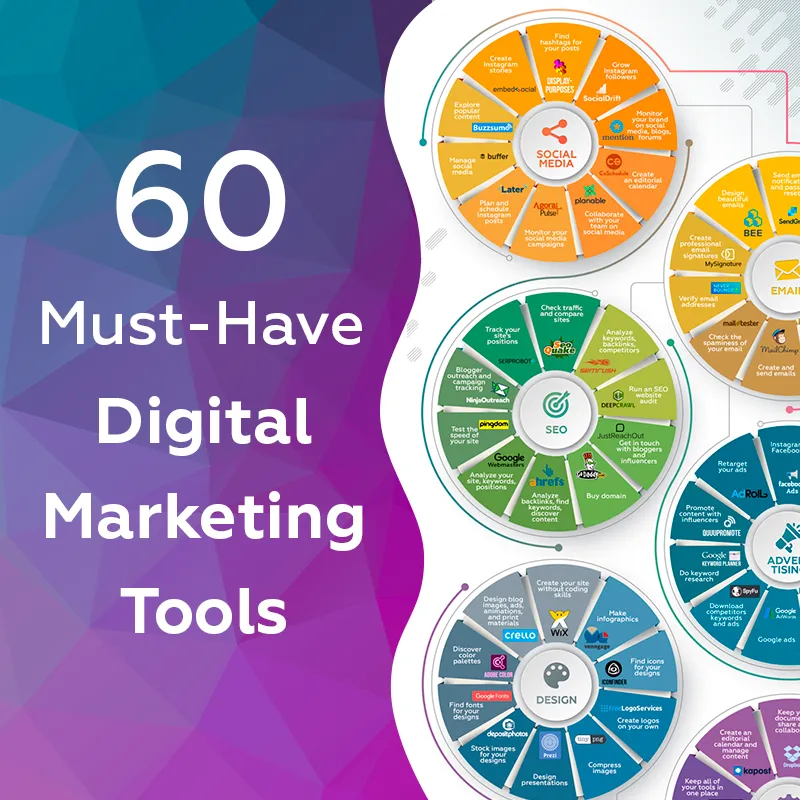How Do You Make Sense of Your Data? A Guide to Data-Driven Marketing
In today’s digital age, a plethora of data is available for businesses to analyze and use for decision-making, leading to the rise of data-driven marketing. By using data and analytics to inform your marketing strategies, you can better understand your audience, personalize your messaging, and drive better business outcomes.
If you still struggle to implement a data-driven marketing strategy effectively, we’ve you covered! In this article, we’ll discuss what data-driven marketing is, why it is important, and how to use it to benefit your business. Read on for top tips on how to use data to drive success.

What is data-driven marketing?
Data-driven marketing is the practice of using data to inform marketing strategies. It involves collecting and analyzing data from various sources, such as website traffic, email campaigns, social media, and other marketing channels. Data-driven marketing can help you gain insights into customer preferences and trends by segmenting your audience based on demographics and behavior. By using data to make your marketing decisions, you can create targeted campaigns that resonate with your audience and lead to increased conversions and sales.

How can data-driven marketing benefit your business?
In the past, marketing decisions were often based on intuition and guesswork. With data-driven marketing, businesses can make informed decisions backed up by facts. Here are a few reasons why data-driven marketing is important for your business:
1. Personalization.
By using data to understand customer behavior and preferences, businesses can create more personalized marketing campaigns that resonate with their audience, leading to increased engagement and conversions.
2. Cost-effectiveness.
Data-driven marketing can be more cost-effective than traditional marketing methods as it allows businesses to target specific segments of their audience, reducing wastage and improving ROI.

3. Improved customer experience.
With the help of data marketing, you can create personalized marketing campaigns that improve the customer journey, increasing customer loyalty and advocacy.
4. Better decision-making.
Data-driven marketing can provide insights into customer behavior, preferences, and trends, helping you make more informed marketing decisions and optimize your campaigns for maximum impact.
5. Better product development.
Analyzing customer data can help you anticipate customer needs and use this information to improve your products or services to meet the needs of your target audience.

8 tips to start with data-driven marketing
1. Define your goals.
Before you start analyzing data, it’s essential to define your goals. Think of what you want to achieve with your data-driven marketing efforts and set measurable KPIs to track progress and success. Ensure everyone on your team understands the goals, and don’t forget to track progress regularly to ensure you are on track.
2. Collect data.
Collecting and analyzing data is the cornerstone of data-driven marketing. This means you need to collect as much data as possible. Use your marketing channels, including website traffic, email campaigns, social media, customer feedback, and other available sources.
3. Analyze your data.
The real value of data comes from analyzing it and using the insights gained from it. Once you have collected your data, analyze it to gain insights into customer behavior, preferences, and trends. Look for patterns and trends in the data that can inform your marketing strategy.

4. Segment your audience.
Use the data you have collected to segment your audience into groups based on demographics, behavior, and preferences. This will allow you to create targeted campaigns that resonate with specific audience segments and deliver more relevant messages.
5. Test and optimize.
A/B testing is a valuable tool for optimizing your marketing efforts. By comparing the performance of different marketing messages, designs, and strategies, you can determine which variations are most effective. This approach can help you improve your campaigns and maximize ROI.
6. Use predictive analytics.
Use predictive analytics to anticipate customer behavior and preferences. For example, you can use predictive analytics to identify which customers are most likely to purchase or which products will likely be popular in the future. It can help you optimize your marketing campaigns and identify new growth opportunities.

7. Integrate your data.
Integrating your data from different sources can give you a clearer picture of customer behavior and preferences. However, integrating data can be a complex process. Consider using data management platforms to help you integrate your data effectively.
8. Keep your data clean.
Ensure your data is accurate and up-to-date by regularly cleaning and maintaining your database. Inaccurate data can lead to flawed insights and misguided marketing strategies. Consider using data cleansing tools or working with a data specialist to ensure your data is relevant and avoid campaign errors.

Challenges of data-driven marketing
While data-driven marketing offers numerous benefits, it also comes with several challenges. It’s crucial to be aware of them and have the plan to overcome them effectively. Here are some of the key challenges that businesses face when implementing data-driven marketing:
1. Volume of data.
Collecting and analyzing large volumes of data can be overwhelming and difficult to manage, especially without the right tools and expertise.
2. Data accuracy.
Ensuring the accuracy and reliability of data can be a problem, as incomplete or inaccurate data can lead to misguided marketing decisions.
3. Data privacy and security.
With data privacy laws and regulations becoming increasingly strict, businesses need to ensure that they are collecting and handling data in compliance with data privacy laws and regulations.

To wrap up
Data-driven marketing is no longer a luxury but a necessity for companies that want to succeed. By incorporating data-driven marketing into your strategy, you can connect with your audience in a personalized way, staying ahead of the competition. With the right tools, expertise, and mindset, you can unlock the full potential of data-driven marketing and achieve desired growth.
Other articles you might find interesting
Brand Affinity: Definitions, Benefits, and Key Strategies
What Is Nostalgia Marketing and How You Can Use It to Engage Your Audience
Cause Marketing: Meaning, Benefits, and Top Strategies









